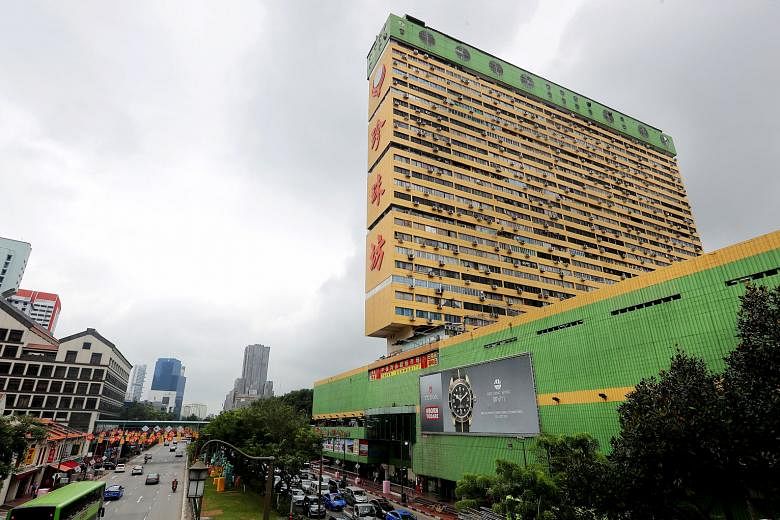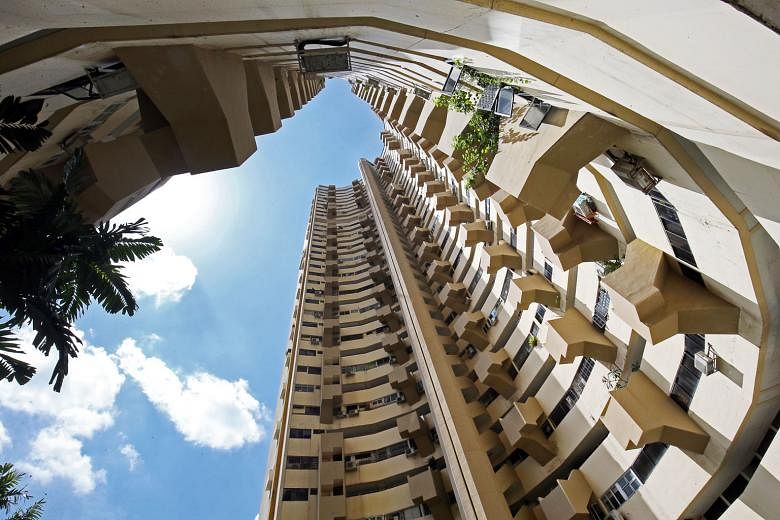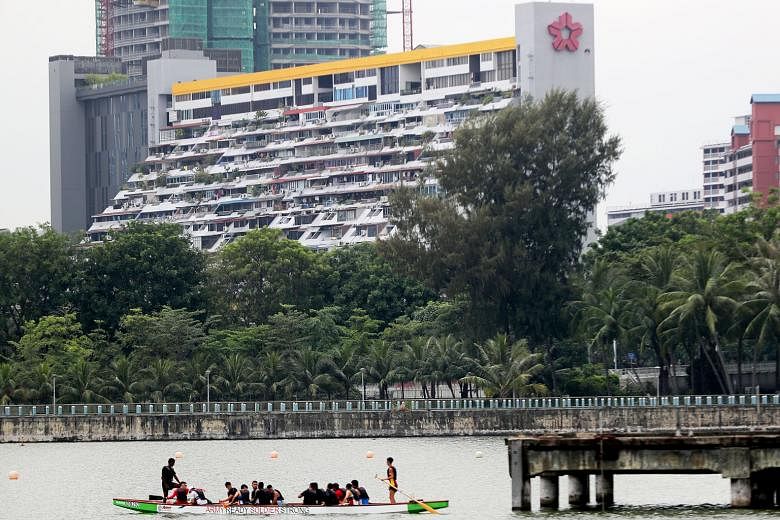When Pearl Bank Apartments, People's Park Complex and Golden Mile Complex were completed in the 1970s, they were considered bold, innovative pieces of architecture.
Yet in just over 40 years, the buildings, which sit on prime land in the Chinatown and Beach Road areas, may soon be torn down.
With the looming threat of en-bloc fever and demolition, heritage experts here fear that the Republic's modernist post-1965 landmarks - designed by pioneering local architects - may never get a chance to be conserved.
Following the sale of Pearl Bank Apartments in February and the collective sales attempts for Golden Mile Complex and People's Park Complex, the Singapore Heritage Society (SHS) is releasing a position paper today proposing a slew of measures to lengthen the lifespan of buildings.
Called "Too Young to Die: Giving New Lease of Life to Singapore's Modernist Icons", the paper will be submitted to the Ministry of National Development, Urban Redevelopment Authority and National Heritage Board later this month.
The society, comprising heritage advocates, architects and historians, is recommending introducing regulations requiring building management corporations to develop and implement long-term maintenance plans - to prevent buildings from neglect - instead of ad hoc, piecemeal ones.
"Singapore's shophouses used to be rundown," said Dr Chua Ai Lin, SHS' executive director. "Few people thought they were worth keeping. But after they were restored and conserved, perspectives and impressions changed.
"Now they are highly valued, viewed as treasures which command sky-high prices, and are a key feature of our landscape."
The paper cites how the Housing Board and town councils here successfully manage old estates, such as Tiong Bahru, by conducting periodic overhauls of lifts, pipes and waterproofing. This results in high-functioning, liveable homes with strong resale prices.
Heritage conservation expert Ho Weng Hin, who contributed to the paper, highlighted that Singapore has yet to conserve any post-independence strata-title buildings.
He said: "As Singapore matures as a nation, we need to move towards a new generation of monuments and heritage structures from our more recent past."
To facilitate this process, Mr Ho believes existing laws and policies that impact the upkeep, lease extension and rehabilitation potential of these buildings will need to be re-examined and tweaked. These include the Building Maintenance and Strata Management Act and Stamp Duties Act.
For instance, the SHS recommends lowering the percentage approval required for the redistribution of strata-title ownership shares from 100 per cent to a more achievable 80 per cent. This is on a par with the percentage required for the collective sale of buildings over 10 years old. This was the technical issue which prevented Pearl Bank Apartments' application for voluntary conservation in 2015 from going through.
The SHS also recommends bolder planning incentives for developers and building owners. Suggestions include offering greater bonus gross floor area and more flexible re-zoning options to encourage rehabilitation and conservation of these sites.
Dr Chua added that the paper primarily sets out to demonstrate that successful collective sales do not mean the end of historic buildings for Singapore.
For instance, another recommendation revolves around encouraging the architectural fraternity to propose alternative plans for building rehabilitation and possible change of use.
She said: "We strongly encourage owners or developers to envision a future for the building based on retention and regeneration. Demolition is not the only option."
The recommendations will be part of a month-long series of programmes and exhibitions set up by the SHS and The Substation - an independent contemporary arts centre - that will run till Sept 23.
The activities have been designed to increase public awareness of the subject and encourage better understanding of the merits of the structures which have made the news this year.
The public outreach is timely, given that an Institute of Policy Studies' Social Lab preliminary study in June found that only a fraction of people surveyed found Pearl Bank Apartments important.
Residents also said they did not find the building's design particularly special and preferred cashing out.




